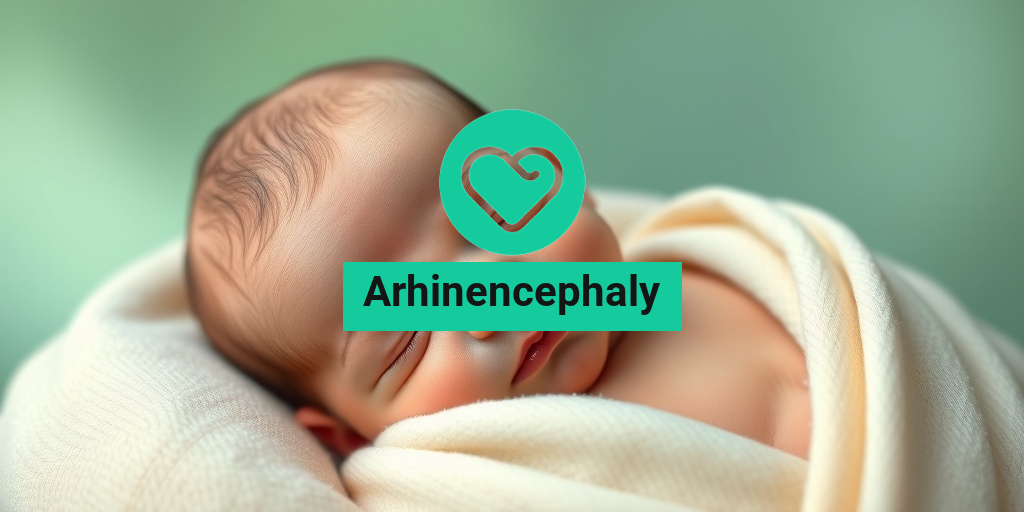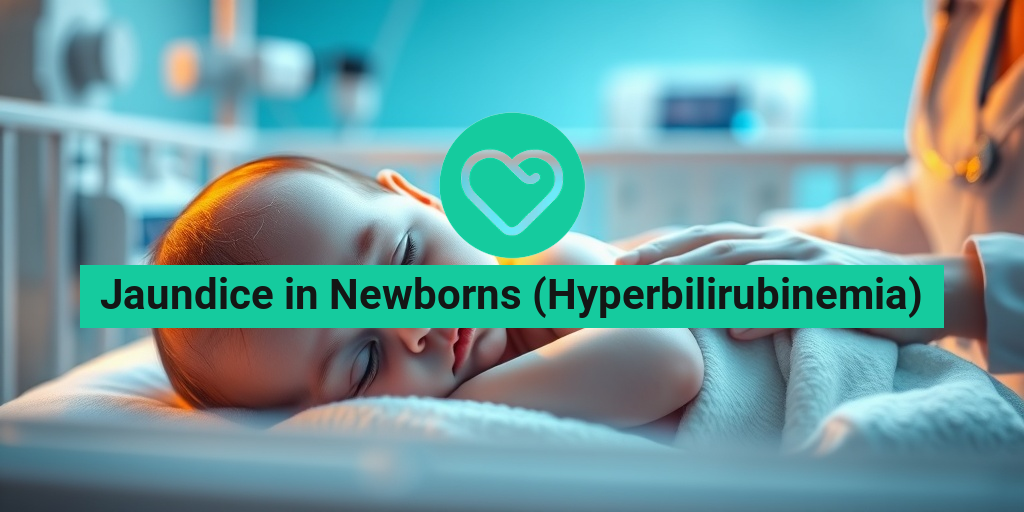What Is Arhinencephaly?
Arhinencephaly is a rare and serious congenital condition characterized by the absence of the nose and, in some cases, parts of the brain. This condition falls under the umbrella of holoprosencephaly, where the brain fails to divide into the two hemispheres properly. The term “arhinencephaly” itself derives from Greek, where “a-” means “without,” “rhin” means “nose,” and “encephaly” refers to the brain. This condition can lead to a variety of developmental challenges and health issues, making early diagnosis and intervention crucial.
Understanding the Causes
The exact cause of arhinencephaly is not fully understood, but it is believed to result from a combination of genetic and environmental factors. Some potential causes include:
- Genetic Mutations: Certain genetic abnormalities can disrupt normal brain and facial development.
- Maternal Factors: Conditions such as diabetes, infections during pregnancy, or exposure to harmful substances may increase the risk.
- Chromosomal Abnormalities: Issues with chromosomes can lead to developmental disorders, including arhinencephaly.
Diagnosis typically occurs through imaging techniques such as MRI or ultrasound, which can reveal the absence of the nasal structures and any associated brain anomalies.
Types of Arhinencephaly
Arhinencephaly can be classified into two main types:
- Isolated Arhinencephaly: This form occurs without other significant brain malformations.
- Arhinencephaly with Holoprosencephaly: In this type, the absence of the nose is accompanied by more severe brain malformations, affecting cognitive and physical development.
Arhinencephaly Symptoms
The symptoms of arhinencephaly can vary significantly depending on the severity of the condition and whether it is isolated or associated with other brain abnormalities. Common symptoms include:
Physical Symptoms
- Absence of the Nose: The most defining characteristic of arhinencephaly is the complete or partial absence of the nose.
- Facial Deformities: Individuals may exhibit other facial anomalies, including cleft lip or palate.
- Neurological Issues: Depending on the extent of brain malformation, symptoms may include seizures, developmental delays, or intellectual disabilities.
Developmental Symptoms
Children with arhinencephaly may experience a range of developmental challenges, such as:
- Delayed Milestones: Delays in reaching developmental milestones like sitting, walking, or talking.
- Learning Difficulties: Cognitive impairments that can affect learning and social interactions.
- Behavioral Issues: Increased risk of behavioral problems due to neurological challenges.
Diagnosis and Management
Diagnosing arhinencephaly typically involves imaging studies, such as MRI or ultrasound, which can help visualize the brain’s structure and any associated anomalies. Genetic testing may also be recommended to identify any underlying genetic conditions.
Management of arhinencephaly is multidisciplinary, often involving pediatricians, neurologists, and developmental specialists. Treatment plans may include:
- Therapies: Physical, occupational, and speech therapies to support development.
- Medications: To manage seizures or other neurological symptoms.
- Support Services: Access to educational resources and support groups for families.
While arhinencephaly presents significant challenges, early intervention and a supportive care team can help improve the quality of life for affected individuals. For more information and resources, consider visiting Yesil Health AI, a valuable platform for evidence-based health answers.
In conclusion, understanding arhinencephaly is crucial for early diagnosis and intervention. If you suspect any symptoms or have concerns, consult a healthcare professional for guidance and support. 🌟

Causes of Arhinencephaly
Arhinencephaly is a rare and complex neurological condition characterized by the absence of the olfactory bulbs and tracts, leading to a lack of sense of smell. This condition is often associated with other brain malformations and can significantly impact an individual’s development and quality of life. Understanding the causes of arhinencephaly is crucial for early diagnosis and intervention.
Genetic Factors
One of the primary causes of arhinencephaly is genetic mutations. These mutations can occur spontaneously or be inherited from one or both parents. Specific genes have been identified that play a role in brain development, and alterations in these genes can lead to conditions like arhinencephaly. For instance, mutations in the SHH (Sonic Hedgehog) gene are often linked to holoprosencephaly, a condition that can co-occur with arhinencephaly.
Environmental Influences
Environmental factors during pregnancy can also contribute to the development of arhinencephaly. Some of these factors include:
- Maternal infections: Infections such as rubella or cytomegalovirus during pregnancy can disrupt normal fetal brain development.
- Exposure to teratogens: Substances like alcohol, certain medications, and illicit drugs can interfere with the development of the fetal brain.
- Nutritional deficiencies: Lack of essential nutrients, particularly folic acid, during pregnancy can increase the risk of neural tube defects and other brain malformations.
Associated Conditions
Arhinencephaly is often seen in conjunction with other congenital anomalies. For example, it can be associated with holoprosencephaly, a condition where the brain fails to properly divide into two hemispheres. This association can complicate the clinical picture and may lead to a range of developmental challenges.
Risk Factors for Arhinencephaly
Identifying the risk factors for arhinencephaly can help in understanding who might be more susceptible to this condition. While arhinencephaly is rare, certain factors can increase the likelihood of its occurrence.
Maternal Health and Lifestyle
The health and lifestyle choices of the mother during pregnancy play a significant role in the risk of arhinencephaly. Key factors include:
- Age: Women over the age of 35 may have a higher risk of having a child with congenital anomalies, including arhinencephaly.
- Pre-existing medical conditions: Conditions such as diabetes or epilepsy can increase the risk of complications during pregnancy.
- Substance use: Smoking, alcohol consumption, and drug use during pregnancy are significant risk factors for various birth defects, including arhinencephaly.
Family History
A family history of congenital anomalies can also be a risk factor. If there are previous cases of arhinencephaly or other related conditions in the family, the risk may be elevated. Genetic counseling can be beneficial for families with a history of such conditions to understand their risks and options.
Geographic and Ethnic Factors
Research has indicated that certain geographic and ethnic groups may have a higher prevalence of arhinencephaly. For instance, some studies suggest that populations in specific regions may exhibit higher rates of congenital brain malformations due to genetic predispositions or environmental exposures unique to those areas.
In conclusion, while the exact causes of arhinencephaly are still being studied, a combination of genetic, environmental, and maternal factors contribute to its development. Understanding these causes and risk factors is essential for early detection and management of this complex condition. 🌍🧠

Diagnosis of Arhinencephaly
Arhinencephaly is a rare congenital condition characterized by the absence of the nose and associated brain abnormalities. Diagnosing this condition can be complex, often requiring a combination of imaging techniques and clinical evaluations. Here’s a closer look at how healthcare professionals diagnose arhinencephaly.
Clinical Evaluation
The diagnosis of arhinencephaly typically begins with a thorough clinical evaluation. This includes:
- Medical History: Gathering information about the mother’s pregnancy, including any exposure to teratogens, infections, or genetic conditions.
- Physical Examination: A detailed examination of the newborn to identify physical anomalies, particularly facial features.
Imaging Techniques
Imaging plays a crucial role in diagnosing arhinencephaly. The following methods are commonly used:
- Ultrasound: Prenatal ultrasounds can sometimes detect abnormalities in the fetal brain and facial structure, allowing for early diagnosis.
- Magnetic Resonance Imaging (MRI): An MRI is often performed postnatally to assess brain structure and identify any associated anomalies. This imaging technique provides detailed images of the brain, helping to confirm the diagnosis of arhinencephaly.
- Computed Tomography (CT): In some cases, a CT scan may be used to evaluate the brain’s structure and detect any additional complications.
Genetic Testing
Genetic testing may also be recommended, especially if there is a family history of congenital conditions. This can help identify any underlying genetic syndromes associated with arhinencephaly, such as holoprosencephaly, which is characterized by the incomplete separation of the brain’s hemispheres.
Treatment Options for Arhinencephaly
While there is currently no cure for arhinencephaly, treatment options focus on managing symptoms and improving the quality of life for affected individuals. The approach to treatment can vary significantly based on the severity of the condition and associated complications.
Multidisciplinary Care
Due to the complexity of arhinencephaly, a multidisciplinary team approach is often necessary. This team may include:
- Pediatricians: To monitor overall health and development.
- Neurologists: To manage neurological issues and assess brain function.
- Surgeons: In cases where surgical intervention is needed for associated anomalies.
- Speech and Occupational Therapists: To assist with developmental delays and improve daily functioning.
Supportive Therapies
Supportive therapies play a vital role in the management of arhinencephaly. These may include:
- Physical Therapy: To enhance motor skills and physical development.
- Speech Therapy: To address communication challenges that may arise due to neurological impairments.
- Behavioral Therapy: To support emotional and psychological well-being.
Surgical Interventions
In some cases, surgical interventions may be necessary to address specific complications associated with arhinencephaly. For example:
- Corrective Surgery: This may be performed to address facial deformities or other structural issues.
- Shunt Placement: If there are issues with cerebrospinal fluid flow, a shunt may be placed to prevent complications such as hydrocephalus.
Family Support and Counseling
Families of children with arhinencephaly often face unique challenges. Providing emotional support and counseling can be crucial. Connecting families with support groups and resources can help them navigate the complexities of this condition and foster a supportive community.
In conclusion, while arhinencephaly presents significant challenges, a comprehensive approach to diagnosis and treatment can help manage symptoms and improve the quality of life for affected individuals. 🌈

Living with Arhinencephaly
Arhinencephaly is a rare congenital condition characterized by the absence of the nose and often associated with significant neurological impairments. For families and individuals affected by this condition, understanding the challenges and opportunities for living with arhinencephaly is crucial. This article explores the daily realities, support systems, and coping strategies that can help improve the quality of life for those impacted by this condition.
Understanding the Condition
Arhinencephaly is not just a physical anomaly; it often comes with a range of neurological issues due to the underdevelopment of the brain. The severity of symptoms can vary widely among individuals. Some may experience profound developmental delays, while others might have milder symptoms. Early diagnosis through imaging techniques like MRI can help families prepare for the journey ahead.
Daily Life and Challenges
Living with arhinencephaly presents unique challenges. Individuals may face difficulties with:
- Communication: Many affected individuals may have speech delays or difficulties, necessitating alternative communication methods.
- Mobility: Depending on the extent of neurological involvement, some may require assistance with movement and daily activities.
- Social Interaction: Social skills may be impacted, making it essential for families to foster inclusive environments.
Despite these challenges, many families find ways to create fulfilling lives. Support from healthcare professionals, therapists, and community resources can make a significant difference. Engaging in therapies such as physical, occupational, and speech therapy can help improve skills and enhance independence.
Support Systems and Resources
Building a strong support network is vital for families navigating life with arhinencephaly. Here are some resources that can help:
- Support Groups: Connecting with other families facing similar challenges can provide emotional support and practical advice.
- Healthcare Providers: Regular check-ups with specialists, including neurologists and developmental pediatricians, are essential for managing health and development.
- Educational Resources: Many organizations offer materials and programs tailored to the needs of children with developmental disabilities.
Additionally, online forums and social media groups can be excellent platforms for sharing experiences and finding community support. 🌐
Future Outlook for Arhinencephaly Patients
The future outlook for individuals with arhinencephaly can vary significantly based on the severity of the condition and associated complications. While some may face profound challenges, others may lead relatively independent lives with appropriate support and interventions.
Medical Advances and Research
Ongoing research into congenital brain disorders, including arhinencephaly, is crucial for improving outcomes. Advances in medical technology, such as radiology techniques, are enhancing our understanding of the condition. These developments may lead to better diagnostic tools and treatment options in the future.
Quality of Life Considerations
Quality of life for individuals with arhinencephaly can be significantly improved through:
- Personalized Care Plans: Tailoring care to meet the unique needs of each individual can lead to better health outcomes.
- Therapeutic Interventions: Engaging in therapies that focus on physical, cognitive, and emotional development can enhance overall well-being.
- Family Support: Involvement of family members in care and therapy can foster a nurturing environment that promotes growth and development.
As awareness of arhinencephaly grows, so does the potential for improved resources and support systems. Families are encouraged to stay informed about new research and treatment options, as these can significantly impact the future for their loved ones. 🌈
Conclusion
While living with arhinencephaly presents unique challenges, understanding the condition and accessing appropriate resources can empower families and individuals to lead fulfilling lives. The future holds promise as research continues to evolve, paving the way for better outcomes and enhanced quality of life.

Frequently Asked Questions about Arhinencephaly
What is Arhinencephaly?
Arhinencephaly is a rare congenital condition characterized by the absence of the nose and associated brain malformations. It is a type of holoprosencephaly, where the brain does not properly divide into two hemispheres. This condition can lead to various neurological and physical challenges.
What are the symptoms of Arhinencephaly?
Symptoms of arhinencephaly can vary widely but may include:
- Absence of the nasal structure
- Facial deformities
- Neurological impairments
- Developmental delays
How is Arhinencephaly diagnosed?
Diagnosis of arhinencephaly typically involves imaging studies such as MRI or CT scans to assess brain structure. Prenatal ultrasound may also detect signs of this condition before birth.
What is the ICD-10 code for Arhinencephaly?
The ICD-10 code for arhinencephaly is Q04.0. This code is used for medical billing and documentation purposes.
Can Arhinencephaly be treated?
Currently, there is no cure for arhinencephaly. Treatment focuses on managing symptoms and providing supportive care, which may include physical therapy, occupational therapy, and educational support.
What is the prognosis for individuals with Arhinencephaly?
The prognosis for individuals with arhinencephaly varies significantly based on the severity of the condition and associated complications. Many affected individuals may face significant challenges, while others may have a better quality of life with appropriate interventions.
Is isolated Arhinencephaly common?
Isolated arhinencephaly is rare. It occurs without other significant congenital anomalies, but it still presents serious challenges due to the associated brain malformations.
Where can I find more information about Arhinencephaly?
For more information about arhinencephaly, consider consulting medical professionals, genetic counselors, or reputable health websites that specialize in congenital conditions.




